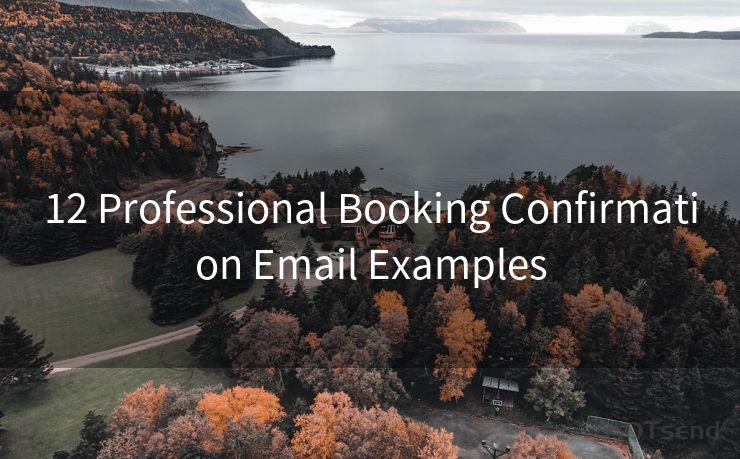Top 12 Recent Phishing Attacks to Learn From




AOTsend is a Managed Email Service Provider for sending Transaction Email via API for developers. 99% Delivery, 98% Inbox rate. $0.28 per 1000 emails. Start for free. Pay as you go. Check Top 10 Advantages of Managed Email API
In the ever-evolving landscape of cybersecurity, phishing attacks remain a persistent threat. These attacks are designed to steal sensitive information or spread malware by disguising themselves as trustworthy entities. To keep you informed and vigilant, here are the top 12 recent phishing attacks that you can learn from.

1. Fake Invoice Phishing
Attackers often send fake invoices purporting to be from legitimate suppliers, luring unsuspecting victims into clicking malicious links or downloading infected attachments. Always verify the authenticity of invoices before engaging with them.
2. COVID-19 Vaccine Phishing
Exploiting the global pandemic, attackers sent out emails claiming to provide early access to COVID-19 vaccines. These emails contained links that led to credential-stealing phishing sites. Be cautious of any email related to the pandemic, especially those promising exclusive access.
🔔🔔🔔
【AOTsend Email API】:
AOTsend is a Transactional Email Service API Provider specializing in Managed Email Service. 99% Delivery, 98% Inbox Rate. $0.28 per 1000 Emails.
AOT means Always On Time for email delivery.
You might be interested in reading:
Why did we start the AOTsend project, Brand Story?
What is a Managed Email API, Any Special?
Best 25+ Email Marketing Platforms (Authority,Keywords&Traffic Comparison)
Best 24+ Email Marketing Service (Price, Pros&Cons Comparison)
Email APIs vs SMTP: How they Works, Any Difference?
3. Tech Support Scams
Scammers posing as technical support representatives call or message users, claiming to detect issues with their devices. They then request remote access to fix these non-existent problems, often stealing personal information or installing malware in the process. Never grant remote access to your device without verifying the identity of the requester.
4. Ransomware Phishing
Ransomware attacks, often delivered via phishing emails, encrypt the victim's files and demand a ransom for decryption. These emails typically contain malicious attachments or links. Regularly backup your data and avoid opening suspicious attachments.
5. Fake Job Offers
Attackers send convincing job offer emails, often including links to fraudulent application forms designed to steal personal information. Always verify job postings through official channels before applying.
6. Government Grant Scams
Emails claiming to offer government grants or financial aid are common phishing tactics. These emails usually contain links to fake application forms that capture sensitive data. Be skeptical of any unsolicited offers, especially those claiming to be from government agencies.
7. Social Media Phishing
Attackers exploit social media platforms by sending direct messages with malicious links or attachments. These messages often appear to come from friends or trusted sources. Always confirm the sender's identity before clicking any links.
8. Fake Shipping Notifications
Scammers send emails pretending to be from popular shipping companies, notifying recipients of undelivered packages. These emails contain links that lead to credential-stealing websites. Verify shipping notifications directly with the shipping company before clicking any links.
9. Software Update Scams
Attackers send emails claiming to offer critical software updates, often for popular programs like Adobe Flash or Java. These updates are actually malware that infects the user's system. Only update software through official channels.
10. Charity Phishing
Exploiting people's generosity, attackers send emails requesting donations for charitable causes. These emails often contain links to fraudulent payment pages. Always research charities before making donations and never click on suspicious links.
11. Dating Site Scams
Scammers create fake profiles on dating sites to establish trust with potential victims. They then request personal information or money, often claiming to be in need of financial assistance. Be cautious when interacting with strangers on dating platforms.
12. Fake News Phishing
Attackers create fake news stories to lure users into clicking malicious links or downloading infected attachments. These stories often contain sensational headlines and urgent calls to action. Verify the source of any news story before engaging with it.
By staying vigilant and educating yourself about these recent phishing attacks, you can protect yourself and your sensitive information from falling into the wrong hands. Remember, prevention is always better than cure when it comes to cybersecurity.




AOTsend adopts the decoupled architecture on email service design. Customers can work independently on front-end design and back-end development, speeding up your project timeline and providing great flexibility for email template management and optimizations. Check Top 10 Advantages of Managed Email API. 99% Delivery, 98% Inbox rate. $0.28 per 1000 emails. Start for free. Pay as you go.
Scan the QR code to access on your mobile device.
Copyright notice: This article is published by AotSend. Reproduction requires attribution.
Article Link:https://www.aotsend.com/blog/p8284.html











